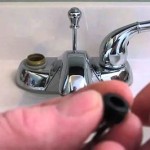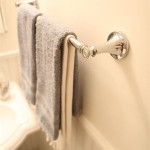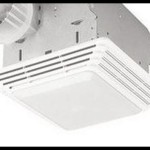Here is an article on how to replace a bathroom vent light.
How To Replace a Bathroom Vent Light
Replacing a bathroom vent light can seem daunting, but with careful preparation and adherence to safety guidelines, it is a task that many homeowners can undertake. This article provides a detailed, step-by-step guide to safely and effectively replace a bathroom vent light, ensuring proper ventilation and illumination in the bathroom.
Before beginning any electrical work, it is crucial to prioritize safety. Ensuring the power supply to the bathroom circuit is completely shut off is the most important step. In addition to electrical safety, consider the structural integrity of the surrounding ceiling and the proper disposal of old components.
Preparation and Safety Precautions
The initial phase of replacing a bathroom vent light involves gathering the necessary tools and materials. The essential tools include a screwdriver set (both Phillips head and flathead), a voltage tester, wire strippers, wire connectors, a ladder, and safety glasses. Replacement parts typically consist of the new vent light unit, new screws and mounting hardware, and potentially duct tape if the vent duct needs resealing.
Before commencing any work, the first and foremost step is to turn off the power to the bathroom circuit at the breaker box. This crucial safety measure prevents electrical shock. After switching off the breaker, it is highly recommended to test the circuit with a non-contact voltage tester to confirm that the power is indeed off. Touch the tester to the wires within the vent light housing; if the tester indicates the presence of voltage, double-check that the correct breaker has been switched off.
Wearing safety glasses is essential to protect the eyes from falling debris, dust, or insulation. Given the location of the vent light within the ceiling, dust, particles, and even small insects can accumulate over time. Eye protection minimizes the risk of irritation or injury.
Assess the condition of the ceiling around the existing vent light fixture. Look for signs of water damage, such as discoloration or sagging, which could indicate a leak. Addressing any water damage before installing the new vent light is imperative to prevent future problems and potential mold growth. Furthermore, ensure the ladder being used is stable and properly positioned to prevent falls.
Consider the disposal of the old vent light unit and any associated components. Depending on local regulations, electronic waste may require specific disposal procedures. Check with local waste management authorities for guidelines on proper disposal methods.
Removing the Old Vent Light
The removal process begins with carefully disassembling the existing vent light fixture. Start by removing the light cover, which is usually held in place by screws or clips. Once the cover is removed, the light bulb can be taken out. Exercise caution when handling the bulb, especially if it is hot.
With the light cover and bulb removed, the next step involves disconnecting the electrical wiring. Before disconnecting any wires, take a clear photograph of the wiring configuration. This photograph serves as a valuable reference when connecting the wires to the new vent light. Using wire strippers, carefully remove the wire connectors, exposing the bare ends of the wires. One wire at a time, disconnect the wires from the old vent light. Use the voltage tester again to ensure no residual power is present.
After disconnecting the electrical wires, the vent light housing can be detached from the ceiling. This process may involve removing screws or releasing clips that hold the housing in place. If the housing is caulked to the ceiling, use a utility knife to carefully score the caulk line, separating the housing from the ceiling. Gently lower the housing, being mindful of its weight and any attached ductwork.
Examine the ductwork connected to the vent light. If the duct is old or damaged, consider replacing it. If the duct is in good condition, ensure it is securely attached to the vent. Use duct tape to seal any gaps or cracks in the ductwork, preventing air leaks and maximizing the efficiency of the ventilation system.
Clean the area around the vent opening in the ceiling. Remove any dust, debris, or old caulk. This ensures a clean surface for the new vent light to be installed properly. Use a damp cloth to wipe the ceiling, but avoid getting the area excessively wet.
Installing the New Vent Light
The installation process begins with connecting the ductwork to the new vent light housing. Ensure the duct is securely attached and properly sealed. Use duct tape to reinforce the connection, preventing air leaks and maintaining the integrity of the ventilation system.
Next, carefully lift the new vent light housing into place and secure it to the ceiling. This is typically done using screws or clips. Align the housing properly and ensure it is flush with the ceiling. Tighten the screws or secure the clips to hold the housing firmly in place.
Refer to the photograph taken earlier and connect the electrical wires to the new vent light. Use wire connectors to join the wires securely. Ensure the wires are connected correctly, matching the configuration of the old vent light. The black wire should be connected to the black wire, the white wire to the white wire, and the ground wire to the ground wire (usually a green or bare copper wire). After connecting the wires, gently tug on each wire to ensure the connection is secure.
Once the wiring is complete, carefully tuck the wires back into the housing and secure the light bulb. Ensure the bulb is screwed in tightly but not overly tightened, which could damage the bulb or the socket. Replace the light cover and secure it with screws or clips. Check that the cover is properly aligned and securely attached.
Before finishing the installation, test the new vent light to ensure it is working correctly. Switch the breaker back on and turn on the light. Verify that the light turns on and off properly. Also, check that the ventilation fan is functioning correctly. Listen for any unusual noises or vibrations. If any problems are detected, switch off the breaker immediately and re-examine the wiring and connections.
If everything is working correctly, the final step is to seal any gaps around the vent light housing. Use caulk to seal the perimeter of the housing, preventing air leaks and ensuring a tight fit. Smooth the caulk line with a wet finger for a clean and professional finish.
Proper disposal of old vent light parts is essential. Follow local regulations for electronic waste disposal. Recycle components whenever possible to minimize environmental impact.
Performing regular maintenance on the bathroom vent light is crucial for its longevity and optimal performance. Clean the vent cover regularly to remove dust and debris. Check the ductwork periodically for leaks or damage. Replace the light bulb when it burns out. Addressing any issues promptly can prevent more significant problems in the future.

Install A New Bathroom Vent Fan Light The San Fernando Valley Sun

How To Remove The Light Cover On A Bathroom Fan

Broan Nutone Bath Fan Model 765h80l Disassembly Repair Help

How To Replace Your Bathroom Exhaust Fan Light Bulb Step By Homelyville

How To Replace Bathroom Light In A Vent Fan Easy Process For Changing The Bulb By Diynate

How To Replace A Bathroom Fan Light Doityourself Com

How To Clean Replace Light Broan Model 678 Exhaust Fan

Update An Existing Bathroom Exhaust Fan Cover Remodelaholic

How To Open This Bathroom Exhaust Fan Replace Light Bulb Doityourself Com Community Forums

How To Clean Replace Light Broan Model 678 Exhaust Fan
Related Posts







